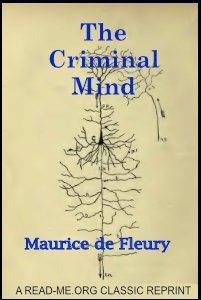By William Healy and Mary Tenney Healy.
A Study in Forensic Psychology. “Careful studies of offenders make group-types stand out with distinctness. Very little advancement in the treatment of delinquents or criminals can be expected if typical characteristics and their bearings are not understood. The group that our present work concerns itself with is comparatively little known, although cases belonging to it, when met, attract much attention. It is to all who should be acquainted with these striking mental and moral vagaries, particularly in their forensic and psychological significances, that our essay is addressed. In some cases vital for the administration of justice, an understanding of the types of personality and of behavior here under discussion is a prime necessity. The whole study of characterology or the motivation of conduct is extremely new, and there are many indications of immense values in uncovered fields. Some appreciation of this fact may be gained from the following pages which show the possibility of tracing one form of behavior to its source.”
Boston: Little, Brown and Co., 1917. 286p.



